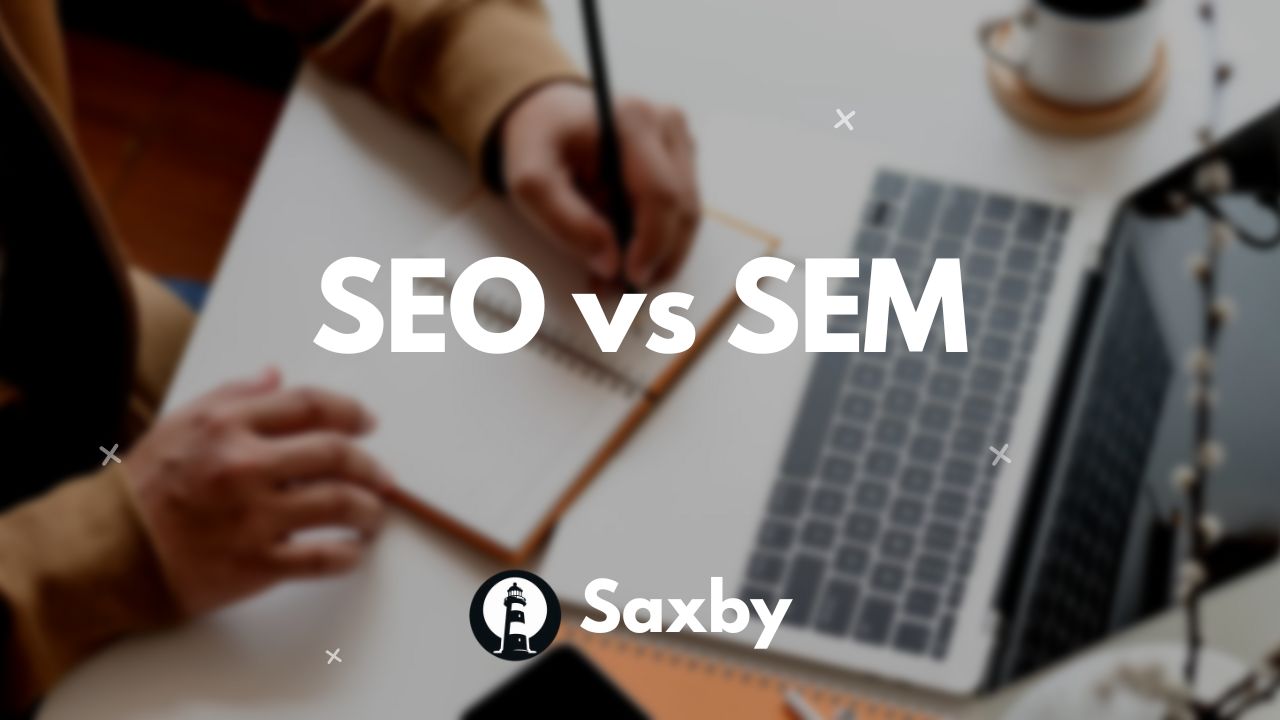Understanding the roles of SEO (Search Engine Optimization) and SEM (Search Engine Marketing) is crucial for enhancing your online presence. While both methods aim to increase visibility on search engines, they use different approaches. This article explores the latest trends and strategies in SEO and SEM, helping you make informed decisions for your digital marketing strategy.
Understanding the Fundamentals of SEO and SEM
What is SEO?
SEO, or Search Engine Optimization, is the practice of optimizing your website to rank higher in search engine results pages (SERPs) organically. This involves improving on-page elements like content quality, meta tags, and site structure, as well as off-page factors such as backlinks and social signals. In 2024, SEO trends emphasize the importance of E-E-A-T (Experience, Expertise, Authoritativeness, Trustworthiness) and user-centric content. With Google’s focus on delivering the best user experiences, it’s more important than ever to create valuable and relevant content that engages your audience.
What is SEM?
SEM, or Search Engine Marketing, involves paid strategies to increase your site’s visibility on search engines. This includes pay-per-click (PPC) advertising, where you pay for your ad to appear in search results based on targeted keywords. The rise of AI in SEM has allowed for more sophisticated ad targeting and optimization, enabling you to achieve better returns on your investment. By utilizing AI-driven platforms, businesses can tailor their ad strategies to meet specific objectives, such as brand awareness or lead generation.
Key Differences and Complementarity
While SEO and SEM are distinct in their approaches, they complement each other in a comprehensive digital marketing strategy. SEO builds your website’s authority and trust over time, driving long-term organic traffic, whereas SEM offers immediate visibility and quick results through paid ads. By integrating both strategies, you can maximize reach and effectiveness, ensuring a balanced approach to online marketing.
The Impact of AI and Algorithm Updates on SEO and SEM
Google’s Search Generative Experience and Its Implications
Google’s Search Generative Experience (SGE) is reshaping how SEO and SEM strategies are developed. SGE uses AI to provide more personalized and contextually relevant search results, impacting how content is ranked and displayed. For businesses, this means focusing on creating content that aligns with user intent and enhances the search experience. By staying updated with Google’s algorithm changes, you can adjust your strategies to maintain visibility and relevance.
AI in Content Creation and Optimization
AI tools have become invaluable in content creation and optimization, offering insights into keyword trends, content gaps, and user preferences. However, it’s crucial to use AI without compromising content quality. Human oversight ensures that the content remains authentic and engaging, meeting the expectations of both search engines and users.
Recent Algorithm Updates and Their Effects
Recent algorithm updates have emphasized E-E-A-T and user-centric content, requiring marketers to adapt their strategies. Google’s focus on these factors means that businesses must prioritize high-quality, authoritative content that provides real value. By understanding these updates and their effects, you can refine your approach to improve rankings and engagement.
User-Centric Content and Search Intent
The Rise of Human-First Content
User-centric content is more than just a trend; it’s a necessity. Creating content that addresses the needs and interests of your audience helps build trust and authority. This involves focusing on experience-driven narratives, comprehensive answers to user queries, and interactive formats that engage users.
Understanding and Optimizing for Search Intent
Optimizing for search intent involves understanding what users are looking for when they type a query into a search engine. By aligning your content with these intents, you can improve your chances of ranking higher and driving relevant traffic. Tools like keyword analysis and audience insights help you identify and target the specific intents of your audience.
Case Studies: Successful Content Strategies
Recent case studies from companies like Edelweiss Bakery and The CBD Supplier highlight the effectiveness of content strategies focused on user needs. These businesses have successfully increased their online visibility by creating content that resonates with their target audiences, offering practical solutions and engaging storytelling.
Optimizing SEM Campaigns in 2024
AI-Driven Ad Platforms and Optimization
The integration of AI in SEM platforms has revolutionized ad targeting and optimization. By leveraging AI, you can create more effective campaigns that deliver higher returns on investment. This includes dynamic ad placements, real-time bidding adjustments, and personalized ad experiences that cater to individual user preferences.
Zero-Click Searches and Their Implications
Zero-click searches, where users find answers directly on the search results page without clicking through to a website, are becoming more prevalent. To adapt to this trend, focus on optimizing snippets and providing concise, valuable information that satisfies user queries directly on the SERP.
Landing Page Optimization for SEM
Optimizing landing pages is crucial for SEM success. A well-designed landing page should be relevant to the ad, provide clear calls to action, and ensure a seamless user experience. By continuously testing and refining your landing pages, you can improve conversion rates and maximize the impact of your SEM campaigns.
Local SEO vs Local SEM
Differences Between Local SEO and Local SEM
Local SEO focuses on optimizing your online presence to attract local customers, primarily through organic means such as Google My Business optimization and local keyword strategies. In contrast, Local SEM involves paid advertising to target local audiences, often using location-based targeting options. Knowing when to use each strategy depends on your business goals and budget.
Case Studies: Local SEO Success Stories
Businesses like Moneta Group and Happy Ears Hearing Center have successfully implemented local SEO strategies to increase foot traffic and online visibility. By optimizing their Google My Business profiles and focusing on local content, these companies have effectively reached their target markets and improved customer engagement.
Integrating Content Marketing, Social Media, and Video Content
Content Marketing Support for SEO and SEM
Content marketing plays a vital role in supporting both SEO and SEM efforts. By creating high-quality content that provides value to your audience, you can enhance your website’s authority and improve your ad campaigns’ relevance. Focus on cross-channel distribution to reach a wider audience and drive consistent engagement.
Social Media Integration with SEO and SEM
Integrating social media with your SEO and SEM strategies can amplify your reach and engagement. Social media platforms offer opportunities to share content, engage with audiences, and drive traffic to your site. By aligning your social media efforts with your overall digital marketing strategy, you can create a cohesive and effective approach.
Video Content Optimization
Video content has a significant impact on SEO and SEM strategies. It engages users, provides valuable information, and enhances your site’s appeal. To optimize video content, ensure it’s relevant, high-quality, and accessible. Use descriptive titles, tags, and transcripts to improve searchability and reach.
Measuring Success and Overcoming Challenges
Key Performance Indicators for SEO and SEM
Measuring the success of your SEO and SEM efforts involves tracking key performance indicators (KPIs) such as organic traffic, conversion rates, cost per click (CPC), and return on ad spend (ROAS). By monitoring these metrics, you can assess the effectiveness of your strategies and make data-driven decisions to optimize performance.
Challenges and Solutions: Recent Case Studies
Recent case studies from companies like DesktopReady and Healthspan provide insights into overcoming challenges in SEO and SEM. These examples demonstrate the importance of adaptability and continuous improvement, highlighting the need to learn from setbacks and refine strategies to achieve success.
Privacy Concerns and Ethical Considerations
Privacy concerns are an important consideration in SEM, especially in paid advertising. Businesses must navigate issues related to data collection and user privacy, ensuring compliance with regulations and maintaining trust with their audience. Ethical considerations in SEO and SEM involve transparency and honesty in marketing practices.
Future-Proofing Your Strategies
Emerging Trends in SEO and SEM for 2024 and Beyond
Staying ahead in the digital marketing landscape requires keeping up with emerging trends. In 2024, businesses should focus on AI integration, voice search optimization, and personalized marketing experiences. By preparing for future changes, you can maintain a competitive edge and continue to grow your online presence.
Staying Ahead of the Competition
To stay ahead of the competition, it’s crucial to be adaptable and continuously learn. This involves staying informed about the latest tools and technologies, participating in industry events, and networking with other professionals. By fostering a culture of innovation and experimentation, you can ensure your digital marketing strategies remain effective and relevant.
By understanding and implementing the latest trends and strategies in SEO and SEM, you can optimize your digital marketing efforts and achieve your business goals. Whether focusing on organic growth through SEO or leveraging paid advertising with SEM, a well-rounded approach will help you succeed in the competitive online landscape.
Ready to transform your content strategy? Try Saxby today and experience the benefits firsthand. Visit our Saxby to get started.

